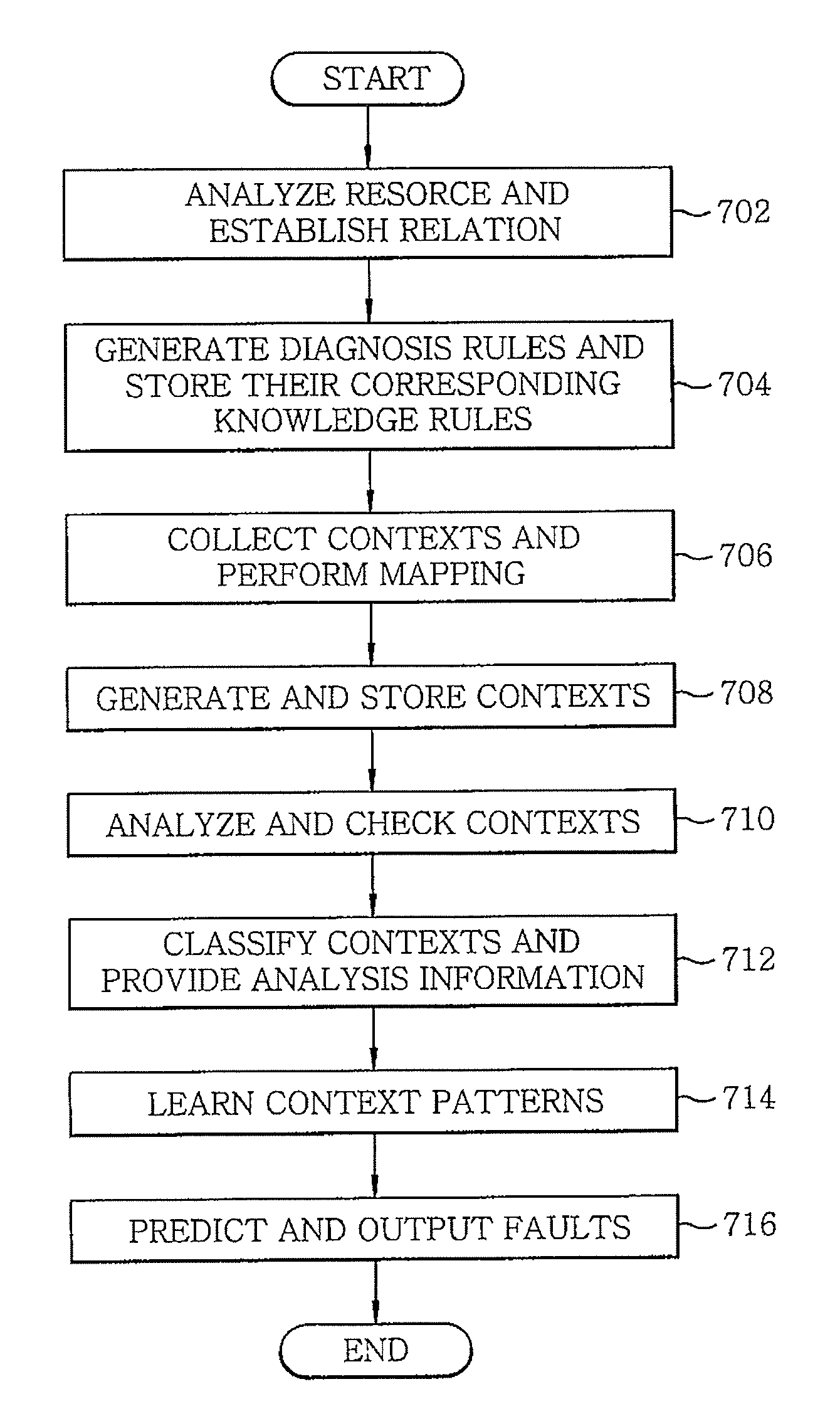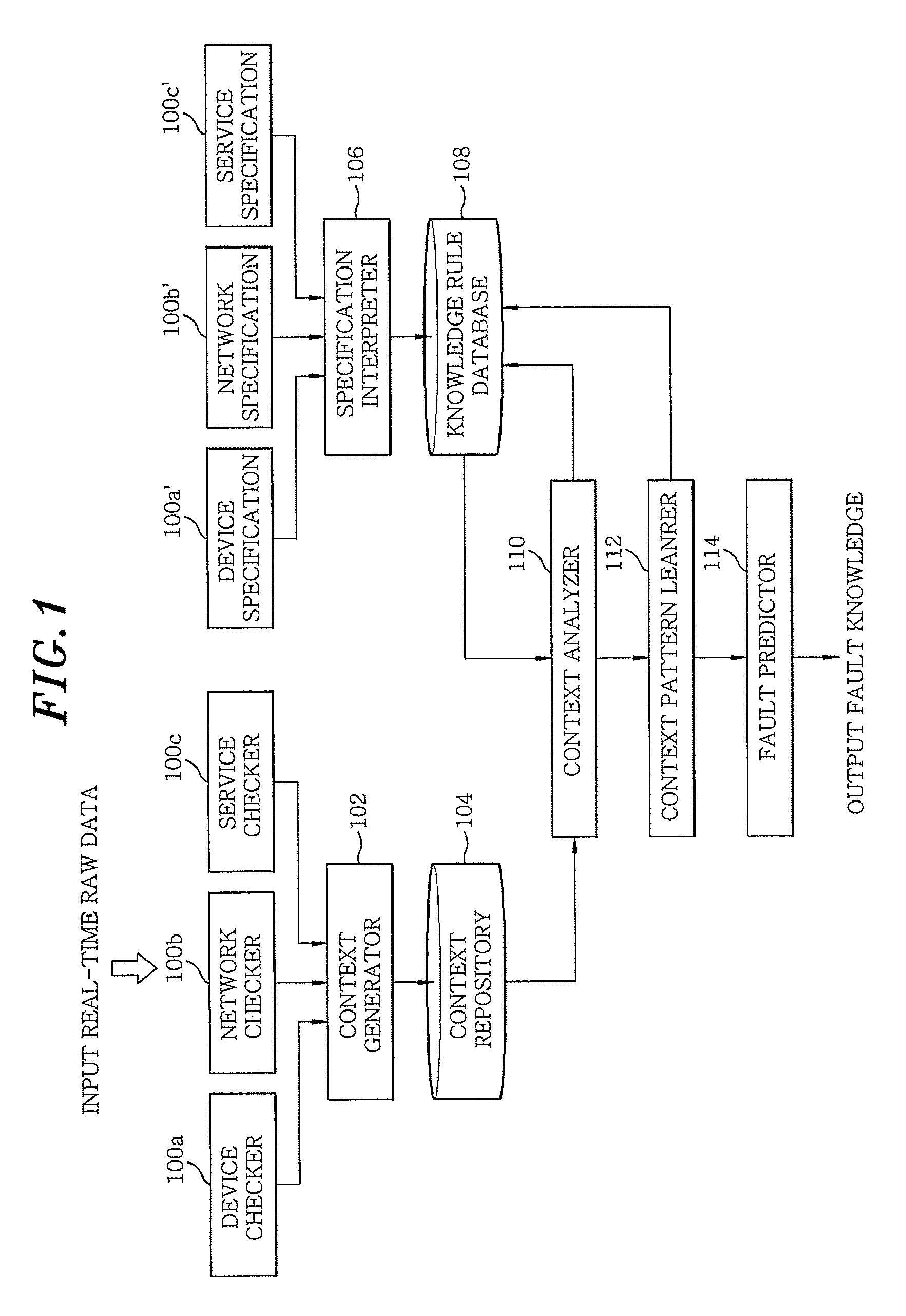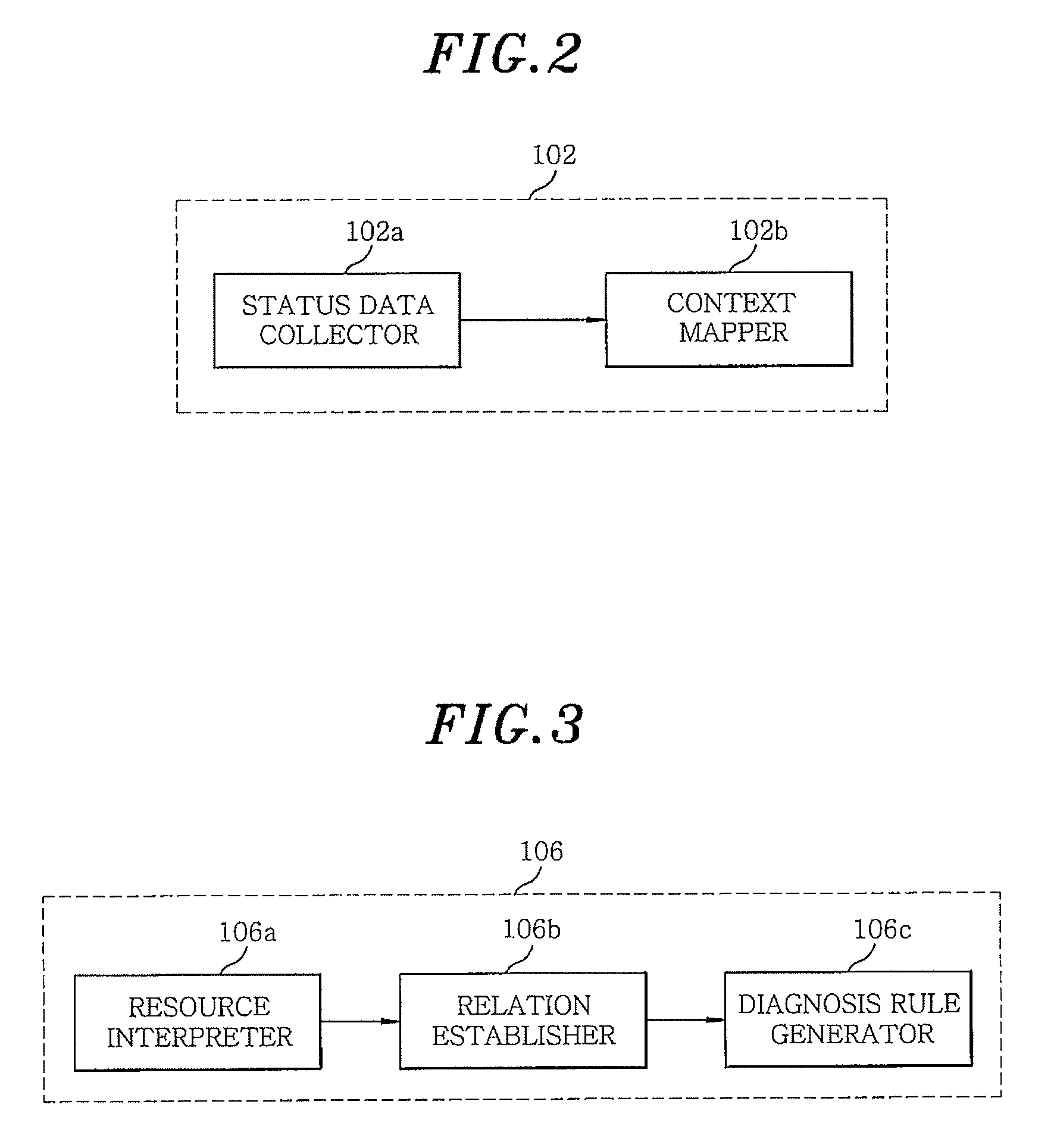System and method for fault prediction in home network
a fault prediction and home network technology, applied in the field of home network fault prediction, can solve the problems of home network environment with a more complicated network topology structure, high fault possibility, and inability to integrate a system based on ubiquitous environments
- Summary
- Abstract
- Description
- Claims
- Application Information
AI Technical Summary
Benefits of technology
Problems solved by technology
Method used
Image
Examples
case 2
[0045 illustrates that an air conditioner is running at a preset temperature, 26° C., in hot weather during summer, but the temperature does not go down. From this, it may be inferred that the situation fault has occurred. Also, by monitoring factors (window, boiler, etc.) that may affect the temperature value, the cause of situation faults (e.g., the fact that the window is open) can be found.
[0046]In order to find these situation faults, the step of analyzing situation information is required. Analyzing situation information means identifying inefficient or unreasonable configuration status of the home network or abnormal status of devices or services by logical inference, as in the examples of the scenarios shown in Table 2. Referring to the examples of Cases 1 and 2, various causes of unstandardized situation faults can be standardized and specified over the home network. This may be accomplished by requiring the analysis of situation information to find out the operation status...
PUM
 Login to View More
Login to View More Abstract
Description
Claims
Application Information
 Login to View More
Login to View More - R&D
- Intellectual Property
- Life Sciences
- Materials
- Tech Scout
- Unparalleled Data Quality
- Higher Quality Content
- 60% Fewer Hallucinations
Browse by: Latest US Patents, China's latest patents, Technical Efficacy Thesaurus, Application Domain, Technology Topic, Popular Technical Reports.
© 2025 PatSnap. All rights reserved.Legal|Privacy policy|Modern Slavery Act Transparency Statement|Sitemap|About US| Contact US: help@patsnap.com



